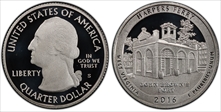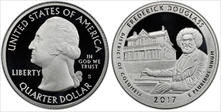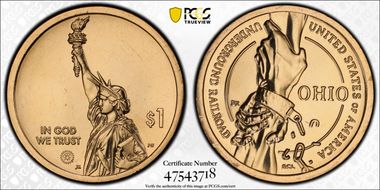HISTORIC & MODERN TOKENS AND MEDALS DEPICTING THE FIGHT AGAINST SLAVERY:WITH HISTORICAL NARRATIVES 的展示图片库
Great Britain, Middlesex. Princess of Wales anti-slavery Æ Token, late 18th century. Three-quarter bust of the future Queen Caroline then Princess of Wales facing left with four pearls in her hair at the side. Two hands joined. Legend inscription with devise of four squares forming a square formation box separating the beginning from the end. Caroline of Brunswick-Wolfenbüttel (Caroline Amelia Elizabeth; 17 May 1768 – 7 August 1821) was Queen of the United Kingdom of Great Britain and Ireland and Queen of Hanover from 29 January 1820 until her death. The estranged wife of George IV, she was Princess of Wales from 1795 to 1820. PRINCESS OF WALES / MAY SLAVERY & OPPRESSION CEASE THROUGHOUT THE WORLD
In 1787 that Granville Sharp and his friend Thomas Clarkson formed the Society for Effecting the Abolition of the Slave Trade in Aylesbury, England. All over Britain there began agitation to abolish slavery. Slave trading was abolished in 1807, and finally in 1833 slavery itself was abolished. The Aylesbury group was among the first to broadcast an Anti-Slavery sentiment in the form of a local coin. Thus, this is one of the earliest pieces of anti-slavery memorabilia and, arguably, is much rarer than the tokens based on Josiah Wedgwood’s ceramic cameo of a kneeling male slave in chains with the slogan, “AM I NOT A MAN AND A BROTHER?”
These coins were minted by John Gibbs Company, Belleville, New Jersey, who also produced many of the American Hard Times tokens of that period. Liberia was the first African colony to become an independent republic. In 1833, the colony’s founding organization, the American Colonization Society, issued a copper coin bearing the names of the colony and the Society. It has previously been suggested to have been a token issue, wholly American in nature, and created for distribution as an advertising piece to promote the American Colonization Society within the United States. A thorough examination of the coinage itself and related contemporary sources within the context of the political and social setting of pre-independence Liberia will reframe the issue correctly as an integral part of a coinage proposal for the colony, struck at the hitherto understudied mint of Stephens, Thomas & Fuller in Belleville, New Jersey.
This medal was given to school children in Tewkesbury in 1834 to celebrate the abolition of slavery in the British Empire. One side depicts a freed slave standing beneath radiant beams of light. His arms are raised to heaven and he holds broken manacles in his hands. Under his feet lies a broken whip and broken manacles are strewn around him. The broad-leaved plant next to him is either tobacco or sugar cane. The inscription around the edge of the medal is taken from Psalm 118, verse 23: ‘This is the Lord's doing; It is marvellous in our eyes’. On the reverse, the medal has the following text: 'In commemoration of the extinction of colonial slavery throughout the British Dominions in the reign of William the IV Augt 1 1834'. The Slavery Abolition Act that outlawed slavery in British colonies was passed on 23 August 1833. On 1 August 1834, all enslaved people in the British Empire were set free, but an 'apprenticeship' system kept many working in the same conditions until 1838. Slave owners received massive amounts of compensation, whilst those set free received nothing.
The emancipation of the British West Indies refers to the abolition of slavery in Britain's colonies in the West Indies during the 1830s. The British government passed the Slavery Abolition Act in 1833, which emancipated all slaves in the British West Indies. After emancipation, a system of apprenticeship was established, where emancipated slaves were required by the various colonial assemblies to continue working for their former masters for a period of four to six years in exchange for provisions. The system of apprenticeship was abolished by the various colonial assemblies in 1838, after pressure from the British public, completing the process of emancipation.
Obverse has profile of British Abolitionist, Joseph Sturge, the author of "The West Indies in 1837, an expose of the cruelty of slavery. In Jamaica." He founded “Free Villages” with the Baptists to provide living quarters for freed slaves. Joseph Sturge (2 August 1793 – 14 May 1859) was an English Quaker, abolitionist and activist. He founded the British and Foreign Anti-Slavery Society (now Anti-Slavery International). He worked throughout his life in Radical political actions supporting pacifism, working-class rights, and the universal emancipation of slaves. In the late 1830s, he published two books about the apprenticeship system in Jamaica, which helped persuade the British Parliament to adopt an earlier full emancipation date. In Jamaica, Sturge also helped found Free Villages with the Baptists, to provide living quarters for freed slaves; one was named Sturge Town in his memory.
The American Anti-Slavery Society was born out of an abolitionists' convention held December 4-6, 1833 in Philadelphia. The convention brought together 62 delegates from New England, Pennsylvania, Ohio, New York and New Jersey, who formed the American Anti-Slavery Society in appeal to the moral and practical circumstances that supported a pro-slavery society in the South. William Lloyd Garrison, the famous abolitionist and publisher of the Boston-based abolitionist newspaper The Liberator, drafted the Society's Constitution and Declaration of Sentiments.
The Bolivar Freeing the Slaves Statue Inauguration is a medal that was minted in 1846 to commemorate the erection of a statue of Simón Bolívar in Bogotá, Colombia. The medal depicts a relief of the statue on the front and an image of Bolívar freeing slaves on the back. The medal was made of silver by Tenerani and C. Voigt Bolivar liberated his own slaves, first in 1814 and then unconditionally in 1821 . He also pressed Congress to decree abolition. He stressed that it was 'madness that a revolution for liberty should try to maintain slavery
This Anti-Slavery token was produced by William Leggett Bramhall. Being a staunch Republican and supporter of Presidential-candidate Abraham Lincoln, Bramhall saw a medalet token as a lucrative and effective way to bolster Lincoln and get the word out about his pro-abolitionist stance. Depicted on his token are the words: “MILLIONS FOR FREEDOM / NOT ONE CENT FOR SLAVERY. Bramhill’s slogan on his medalet became so popular, that it quickly evolved to become a common rallying cry for abolitionists. Struck by the Scoville Manufacturing Company of Waterbury Connecticut, a total of 15,000 in brass, 7 in silver, and 75 in copper were made. The obverse reads “SUCCESS TO REPUBLICAN PRINCIPLES,” aligning the abolitionist movement to Lincoln’s Presidential campaign.
The most common obverse die that was used to make the anti-slavery Civil War tokens featured a portrait of Lady Liberty, the date, “1863,” and the slogan, “Liberty and No Slaves.” George and Melvin Fuld listed this die as #36 in their classic work, Patriotic Civil War Tokens. It was paired with three reverse dies, numbers 340, 271 and 432. Reverse die #432 has the slogan, “No Compromise with Traitors.” This is by far the scarcest of the tokens that featured the “Liberty and Slaves” slogan on the obverse. The Fulds rated it as a Rarity-4 (201 – 500 known).. Although the “No Compromise with Traitors” die was used to strike 22 varieties of Civil War tokens, all but three or four them are scarce to rare. It was a common practice to make “vanity tokens” for Civil War era collectors who wanted something rare. That would explain why so many CWT varieties are known with this design
Reverse die #271 features the slogan “Union For Ever” mostly surrounded by a wreath of agricultural products. There is a Union shield at the bottom flanked by two American flags on each side. The “Union Forever” slogan appears on many Civil War tokens on several different die varieties. Die #271 was also paired with nine other obverse dies which was not an unusual practice by those who made the tokens. The Fulds rated it as a rarity 3, with an estimated population of 501 to 2,000 pieces. This token was distributed by New York City token maker George Glaubrecht.
Reverse die #340a features a Union shield draped by American flags, mostly surround by a laurel wreath. A liberty cap, surrounded by 13 stars, is hung on a pole above the shield. This is by far the most common variety that has die #36 as the obverse. The Fulds rated it as a rarity 2, with estimated the number of available pieces to be between 2,001 and 5,000. This token was distributed by New York City token maker George Glaubrecht.
1871 Abraham Lincoln / Emancipation Proclamation medal. Bronze, 45 mm. Julian CM-16. Dies by William Barber. The surfaces are light mahogany with plenty of underlying gold and pale blue, lustrous and eye-catching. The high profile portrait of Lincoln has the merest whisper of cabinet friction on a single strand of hair, far less than usually encountered. There were 363 pieces struck in bronze between 1871 (when the first 45 pieces were struck) and 1904. The biggest single mintage year was 1872, with 155; after that, most years were 5, 10, or none at all, as demand required. It is no great surprise that Mint Director James Pollock, whose name appears at the base of the reverse, thought to honor Lincoln's Emancipation Proclamation -- he got to know Lincoln well when they were both Congressmen and both roomed at Mrs. Anne Spriggs' boardinghouse, where Pollock's better-refined anti-slavery ideas may have informed Lincoln's evolving opinion on the issue. After Pollock chose not to run again for Governor of Pennsylvania, Lincoln appointed him to be Director of the Mint. This medal is something of a thank you memorial card from Pollack to Lincoln.
William Lloyd Garrison joined the Abolition movement in 1830, when he was 25 years old. He became associated with the American Colonization Society, an organization that believed free blacks should emigrate to a territory on the west coast of Africa. At first glance the society seemed to promote the freedom and happiness of blacks. There certainly were members who encouraged the manumission (granting of freedom) to slaves. However, it turned out that the number of members advocating manumission constituted a minority. Most members had no wish to free slaves; their goal was only to reduce the numbers of free blacks in the country and thus help preserve the institution of slavery. In the very first issue of his anti-slavery newspaper, the Liberator, William Lloyd Garrison stated, "I do not wish to think, or speak, or write, with moderation. . . . I am in earnest -- I will not equivocate -- I will not excuse -- I will not retreat a single inch -- AND I WILL BE HEARD." And Garrison was heard. For more than three decades, from the first issue of his weekly paper in 1831, until after the end of the Civil War in 1865 when the last issue was published, Garrison spoke out eloquently and passionately against slavery and for the rights of America's black inhabitants.
The abolition of slavery in Peru is celebrated on February 18, 1854. Throughout the Middle Passage, approximately 95,000 slaves were brought into Peru, with the last group arriving in 1850. Often slaves were initially transported to Cuba and Hispaniola, from where traders brought them to Panama and the Viceroyalty of Peru. Planters and others also purchased slaves in Cartagena, Colombia, or Veracruz, Mexico, at trade fairs, and they returned to Peru with the new slaves imported by the slave ships. As a result of the "New Laws" of 1548 and the influence of the denunciation of the abuses against Native Americans by Friar Bartolomé de las Casas, African slaves gradually replaced natives at the encomiendas. Slave owners in Peru developed preferences to have slaves from specific areas of Africa (believed to have certain characteristics); they wanted to have slaves of one area who could communicate with each other. They believed slaves from Guinea, from the Senegal River down to the Slave Coast, were easier to manage and had marketable skills. They already knew how to plant and cultivate rice, train horses, and herd cattle on horseback. The slave owners also preferred slaves from the area stretching from Nigeria to eastern Ghana. The slave owners' third choice was for slaves from Congo, Mozambique, Madagascar, and Angola.
Cuffy, also spelled as Kofi or Koffi (died in 1763), was an Akan man who was captured in his native West Africa and stolen for slavery to work on the plantations of the Dutch colony of Berbice in present-day Guyana. In 1763, he led a major slave revolt of more than 3,800 slaves against the colonial regime. Today, he is a national hero in Guyana. Coffy is commemorated in the 1763 Monument in the Square of the Revolution in the capital Georgetown.
First claimed by Spain in 1492 when Christopher Columbus landed in Haiti, the nation was then ceded to France in 1665. Haiti's riches could only be exploited by importing up to 40,000 slaves a year. For nearly a decade in the late 18th century, Haiti accounted for more than one-third of the entire Atlantic slave trade. Conditions for these men and women were atrocious; the average life expectancy for a slave on Haiti was 21 years. Abuse was dreadful, and routine.” (Haiti: a long descent to hell, The Guardian). The oppression of slavery and exploitation soon led to unrest, and in 1791, a group of former slaves led the first successful slave revolt in history. This battle set the wheels in motion for the Haitian Revolution, ultimately leading to independence in 1804, making Haiti the first Latin American nation to gain independence and the first black-led republic in the world. However, slavery is still widespread in Haiti today. According to the 2014 Global Slavery Index, Haiti has an estimated 237,700 enslaved persons making it the country with the second-highest prevalence of slavery in the world, behind only Mauritania.
By the 1550s, the Spanish had wiped out most of the indigenous population of Cuba, which up to that point had been their primary source of enslaved labor. Chattel slavery of people of African origin was thus introduced around this time in order to make up for the labor shortage. In March 1812, a series of revolts led by freedman José Antonio Aponte erupted in the plantations of Cuba. After the revolts were suppressed by the local militias armed by the government, hundreds of enslaved people were arrested, with many of the leaders being tried and executed. By 1817, Britain and Spain were making a concerted effort to reform their diplomatic ties and negotiate the legal status of the Atlantic slave trade. An Anglo-Spanish treaty in 1817 formally gained Spanish agreement to immediately end the slave trade north of the Equator and expand enforcement against illegal slave ships. But, as recorded by legal trade documents of the era, 372,449 enslaved people were imported to Cuba before the slave trade legally ended, and at least 123,775 were imported between 1821 and 1853. Even as the slave trade ceased in other parts of the Atlantic, the Cuban slave trade continued on until 1867. The ownership of human beings as chattel slaves remained legal in Cuba until 1880. The slave trade in Cuba would not systematically end until chattel Cuban slavery was abolished by Spanish royal decree in 1886, making it one of the last countries in the Western Hemisphere (preceding only Brazil) to formally abolish slavery.
By the 1550s, the Spanish had wiped out most of the indigenous population of Cuba, which up to that point had been their primary source of enslaved labor. Chattel slavery of people of African origin was thus introduced around this time in order to make up for the labor shortage. In March 1812, a series of revolts led by freedman José Antonio Aponte erupted in the plantations of Cuba. After the revolts were suppressed by the local militias armed by the government, hundreds of enslaved people were arrested, with many of the leaders being tried and executed. By 1817, Britain and Spain were making a concerted effort to reform their diplomatic ties and negotiate the legal status of the Atlantic slave trade. An Anglo-Spanish treaty in 1817 formally gained Spanish agreement to immediately end the slave trade north of the Equator and expand enforcement against illegal slave ships. But, as recorded by legal trade documents of the era, 372,449 enslaved people were imported to Cuba before the slave trade legally ended, and at least 123,775 were imported between 1821 and 1853. Even as the slave trade ceased in other parts of the Atlantic, the Cuban slave trade continued on until 1867. The ownership of human beings as chattel slaves remained legal in Cuba until 1880. The slave trade in Cuba would not systematically end until chattel Cuban slavery was abolished by Spanish royal decree in 1886, making it one of the last countries in the Western Hemisphere (preceding only Brazil) to formally abolish slavery.
Great Britain outlawed slavery in 1807, and subsequently began to pressure other nations to follow suit—including Brazil upon its independence from Portugal. However, in 1822, 1.5 million of 3.5 million people in Brazil were enslaved and the practice was not simply tolerated, but strongly supported by all segments of society, including the Catholic Church. The Catholic Church ended its support of slavery by 1887, and not long after the Portuguese Crown began to position itself against it. On May 13, 1888, the remaining 700,000 enslaved persons in Brazil were freed.
Great Britain outlawed slavery in 1807, and subsequently began to pressure other nations to follow suit—including Brazil upon its independence from Portugal. However, in 1822, 1.5 million of 3.5 million people in Brazil were enslaved and the practice was not simply tolerated, but strongly supported by all segments of society, including the Catholic Church. The Catholic Church ended its support of slavery by 1887, and not long after the Portuguese Crown began to position itself against it. On May 13, 1888, the remaining 700,000 enslaved persons in Brazil were freed.
By 1888, abolition of slavery had the support of most Brazilians—including several conservative sectors—the culmination of a long process of societal and economic changes. By the time slavery was abolished, the practice had already begun to decrease due to the modernization of agriculture and increasing migration towards Brazil’s cities from rural areas.
By 1888, abolition of slavery had the support of most Brazilians—including several conservative sectors—the culmination of a long process of societal and economic changes. By the time slavery was abolished, the practice had already begun to decrease due to the modernization of agriculture and increasing migration towards Brazil’s cities from rural areas.
By 1888, abolition of slavery had the support of most Brazilians—including several conservative sectors—the culmination of a long process of societal and economic changes. By the time slavery was abolished, the practice had already begun to decrease due to the modernization of agriculture and increasing migration towards Brazil’s cities from rural areas.
On May 13, 1888, Brazilian Princess Isabel of Bragança signed Imperial Law number 3,353. Although it contained just 18 words, it is one of the most important pieces of legislation in Brazilian history. Called the “Golden Law,” it abolished slavery in all its forms. For 350 years, slavery was the heart of the Brazilian economy. According to historian Emilia Viotti da Costa, 40 percent of the 10 million enslaved African brought to the New World ended up in Brazil. Enslaved persons were so pivotal to the economy that Ina von Binzer, a German educator who lived in Brazil in the late 1800s, wrote: “In this country, the Blacks occupy the main role. They are responsible for all the labor and produce all the wealth in this land. The white Brazilian just doesn’t work.”
On May 13, 1888, Brazilian Princess Isabel of Bragança signed Imperial Law number 3,353. Although it contained just 18 words, it is one of the most important pieces of legislation in Brazilian history. Called the “Golden Law,” it abolished slavery in all its forms. For 350 years, slavery was the heart of the Brazilian economy. According to historian Emilia Viotti da Costa, 40 percent of the 10 million enslaved African brought to the New World ended up in Brazil. Enslaved persons were so pivotal to the economy that Ina von Binzer, a German educator who lived in Brazil in the late 1800s, wrote: “In this country, the Blacks occupy the main role. They are responsible for all the labor and produce all the wealth in this land. The white Brazilian just doesn’t work.”
Decree No. 2262 of the National Convention, of 16 Pluviôse Year II of the French Republic (1794), one and indivisible, which abolishes the slavery of Negroes in the colonies The National Convention declares that the slavery of the Negroes, in all the Colonies, is abolished; consequently it decrees that all men, without distinction of color, domiciled in the colonies, are French citizens, and will enjoy all the rights assured by the constitution. - It refers to the committee of public safety, to report to it without delay on the measures to be taken to ensure the execution of this decree.
On August 1st, 1834, slavery expired as an institution sanctioned by law and seemed to deliver from an intolerable structural predicament the 10,000-odd men, women, and children in The Bahamas. The first article “Emancipation but not Freedom” addressed the conditions of slavery and the years 1834 to 1838, the Apprenticeship period (Thompson & Saunders, 2019a). Enslaved men and women found themselves intentionally hobbled by the laws that structured their enslavement. They could not move about freely; gather among themselves on their own terms; carry certain objects; generally, give evidence against a white person; be involved in certain economic activities, and could not speak freely. Indeed, they dare not involve themselves in seeking to change the social order. And, limits such as these on their freedom of voice, action, and initiative only grew as their numbers in the community
The Civil War was America's bloodiest conflict.. Over four years, 237 named battles were fought, as were many more minor actions and skirmishes, The number of soldiers who died between 1861 and 1865, is generally estimated between 620,000 and 750, 000. This death toll is approximately equal to the total of American fatalities in the Revolutionary War, the War of 1812, the Mexican War, the Spanish American War, World War I, World War II, and the Korean War ,combined. The central cause of the war was the dispute over whether slavery would be permitted to expand into the western territories
Historian Drew Gilpin Faust observed that "leaders of the secession movement across the South cited slavery as the most compelling reason for southern independence". Slavery ended in and with the Civil War both because slaves sought their own freedom and because the Union Army demonstrated that the Confederate government could not make good on its promise to protect the property rights whites held in slavery. The formal abolition of slavery laws was carried out in the terms of reconstruction for Southern states. A new chapter in American history opened as the Thirteenth Amendment, passed in January of 1865, was implemented. It abolished slavery in the United States.
Historian Drew Gilpin Faust observed that "leaders of the secession movement across the South cited slavery as the most compelling reason for southern independence". Slavery ended in and with the Civil War both because slaves sought their own freedom and because the Union Army demonstrated that the Confederate government could not make good on its promise to protect the property rights whites held in slavery. The formal abolition of slavery laws was carried out in the terms of reconstruction for Southern states. A new chapter in American history opened as the Thirteenth Amendment, passed in January of 1865, was implemented. It abolished slavery in the United States.
The Slave Trade Act 1807, officially An Act for the Abolition of the Slave Trade, was an Act of the Parliament of the United Kingdom prohibiting the slave trade in the British Empire. Although it did not abolish the practice of slavery, it did encourage British action to press other nation states to abolish their own slave trades. Many of the supporters thought the Act would lead to the end of slavery. Slavery on English soil was unsupported in English law, but it remained legal in most of the British Empire until the Slavery Abolition Act in 1833.
The Slave Trade Act 1807, officially An Act for the Abolition of the Slave Trade, was an Act of the Parliament of the United Kingdom prohibiting the slave trade in the British Empire. Although it did not abolish the practice of slavery, it did encourage British action to press other nation states to abolish their own slave trades. Many of the supporters thought the Act would lead to the end of slavery. Slavery on English soil was unsupported in English law, but it remained legal in most of the British Empire until the Slavery Abolition Act in 1833.
John Brown (May 9, 1800 – December 2, 1859) was an evangelical Christian of strong religious convictions and an American abolitionist leader. First reaching national prominence for his radical abolitionism and fighting in "Bleeding Kansas",; he was captured and executed for a failed incitement of a slave rebellion at Harpers Ferry preceding the American Civil War.
John Brown (May 9, 1800 – December 2, 1859) was an evangelical Christian of strong religious convictions and an American abolitionist leader. First reaching national prominence for his radical abolitionism and fighting in "Bleeding Kansas",; he was captured and executed for a failed incitement of a slave rebellion at Harpers Ferry preceding the American Civil War.
Toussaint Louverture (1743 – 1803) was born enslaved on the French colony of Saint-Domingue, now known as Haiti. He was a devout Catholic who became a freeman before the revolution and, once freed, identified as a Frenchman for the greater part of his life. Louverture, at the start of the Haitian revolution he was nearly 50 years old and began his military career as a lieutenant to Biassou, an early leader of the 1791 War for Freedom in Saint-Domingue. Initially allied with the Spaniards of neighboring Santo Domingo, Louverture switched his allegiance to the French when the new Republican government abolished slavery In March 1801, Louverture appointed a constitutional assembly, composed chiefly of white planters, to draft a constitution for Saint-Domingue. He promulgated the Constitution on 7 July 1801, officially establishing his authority over the entire island of Hispaniola. It made him governor-general for life with near absolute powers.
Toussaint Louverture (1743 – 1803) was born enslaved on the French colony of Saint-Domingue, now known as Haiti. He was a devout Catholic who became a freeman before the revolution and, once freed, identified as a Frenchman for the greater part of his life. Louverture, at the start of the Haitian revolution he was nearly 50 years old and began his military career as a lieutenant to Biassou, an early leader of the 1791 War for Freedom in Saint-Domingue. Initially allied with the Spaniards of neighboring Santo Domingo, Louverture switched his allegiance to the French when the new Republican government abolished slavery In March 1801, Louverture appointed a constitutional assembly, composed chiefly of white planters, to draft a constitution for Saint-Domingue. He promulgated the Constitution on 7 July 1801, officially establishing his authority over the entire island of Hispaniola. It made him governor-general for life with near absolute powers.
Victor Schœlcher ( 22 July 1804 – 25 December 1893) was a French abolitionist, writer, politician and journalist, best known for his leading role in the abolition of slavery in France in 1848, during the Second Republic. Schœlcher became an advocate for the immediate emancipation of slaves. He published this ideas in Des colonies françaises: Abolition immédiate de l'esclavage ("Of the French colonies: Immediate abolition of slavery") in 1842. He was a member of the Société française pour l'abolition de l'esclavage ("French Society for the Abolition of Slavery") founded in 1834.
Victor Schœlcher ( 22 July 1804 – 25 December 1893) was a French abolitionist, writer, politician and journalist, best known for his leading role in the abolition of slavery in France in 1848, during the Second Republic. Schœlcher became an advocate for the immediate emancipation of slaves. He published this ideas in Des colonies françaises: Abolition immédiate de l'esclavage ("Of the French colonies: Immediate abolition of slavery") in 1842. He was a member of the Société française pour l'abolition de l'esclavage ("French Society for the Abolition of Slavery") founded in 1834.
This is one of the silver coins issued to commemorate the abolition of slavery. Great Britain abolished the use of slavery for all the members of the West African States in 1807. In 2007, those seven African nations authorized the minting (a mere 850 each!) of 27mm silver (0.25 oz. ASW) Essai coins to celebrate the 200th Anniversary of that monumental event. The coins feature the heroes of the Abolition of Slavery movement on one side and the issuing nations' coats of arms on the other.. Because the members of the West African States [7 in 2007] utilize a common currency, they have issued few coins under their own name. The obverse of the coin depicts the coat of arms, the inscription RÉPUBLIQUE DE CÔTE D'IVOIRE -UNION · DISCIPLINE · TRAVAIL. The reverse contains the image of the 1787 Wedgewood abolitionist token, “Am I not a man, and a brother
This is one of the silver coins issued to commemorate the abolition of slavery. Great Britain abolished the use of slavery for all the members of the West African States in 1807. In 2007, those seven African nations authorized the minting (a mere 850 each!) of 27mm silver (0.25 oz. ASW) Essai coins to celebrate the 200th Anniversary of that monumental event. The coins feature the heroes of the Abolition of Slavery movement on one side and the issuing nations' coats of arms on the other.. Because the members of the West African States [7 in 2007] utilize a common currency, they have issued few coins under their own name. The obverse of the coin depicts the coat of arms, the inscription RÉPUBLIQUE DE CÔTE D'IVOIRE -UNION · DISCIPLINE · TRAVAIL. The reverse contains the image of the 1787 Wedgewood abolitionist token, “Am I not a man, and a brother
Olaudah Equiano ( 1745 – 1797), was a writer and abolitionist from, according to his memoir, the Eboe (Igbo) region of the Kingdom of Benin (today southern Nigeria). Enslaved as a child in Africa, he was taken to the Caribbean and sold as a slave to a Royal Navy officer. He was sold twice more but purchased his freedom in 1766. As a freedman in London, Equiano supported the British abolitionist movement. He was part of the Sons of Africa, an abolitionist group composed of Africans living in Britain, and he was active among leaders of the anti-slave trade movement in the 1780s. He published his autobiography, "The Interesting Narrative of the Life of Olaudah Equiano" (1789), which depicted the horrors of slavery. It went through nine editions in his lifetime and helped gain passage of the British Slave Trade Act 1807, which abolished the slave trade.
Olaudah Equiano ( 1745 – 1797), was a writer and abolitionist from, according to his memoir, the Eboe (Igbo) region of the Kingdom of Benin (today southern Nigeria). Enslaved as a child in Africa, he was taken to the Caribbean and sold as a slave to a Royal Navy officer. He was sold twice more but purchased his freedom in 1766. As a freedman in London, Equiano supported the British abolitionist movement. He was part of the Sons of Africa, an abolitionist group composed of Africans living in Britain, and he was active among leaders of the anti-slave trade movement in the 1780s. He published his autobiography, "The Interesting Narrative of the Life of Olaudah Equiano" (1789), which depicted the horrors of slavery. It went through nine editions in his lifetime and helped gain passage of the British Slave Trade Act 1807, which abolished the slave trade.
Frederick Douglass was an American social reformer, abolitionist, orator, writer, and statesman. After escaping from slavery in Maryland, he became a national leader of the abolitionist movement in Massachusetts and New York, becoming internationally famous for his oratory and incisive antislavery writings.
Frederick Douglass was an American social reformer, abolitionist, orator, writer, and statesman. After escaping from slavery in Maryland, he became a national leader of the abolitionist movement in Massachusetts and New York, becoming internationally famous for his oratory and incisive antislavery writings.
This is a fantasy pattern silver coin issued on behalf of the West African Economic and Monetary Union countries to commemorate the abolition of slavery. Great Britain abolished the use of slavery for all the members of the West African States in 1807. .William Wilburforce is on the Burkina Faso coin. Because the members of the West African States utilize a common currency, they have issued few coins under their own name. These nations were approached by numismatist, Joseph Lang, and were asked consider issuing non-circulating legal tender coins to commemorate the 200th anniversary of the Britain’s abolishment of slavery in 1807. They declined. Joseph Lang moved independently to produce the coins. His initials, "JL" are in the obverse field. These were then struck to recoup the losses of the endeavor. While there is no definitive data on the mintage of these coins, it is believed the matte BU's were limited to 850 examples for each country and proofs were limited to 50 strikes.
This is a fantasy pattern silver coin issued on behalf of the West African Economic and Monetary Union countries to commemorate the abolition of slavery. Great Britain abolished the use of slavery for all the members of the West African States in 1807. .William Wilburforce is on the Burkina Faso coin. Because the members of the West African States utilize a common currency, they have issued few coins under their own name. These nations were approached by numismatist, Joseph Lang, and were asked consider issuing non-circulating legal tender coins to commemorate the 200th anniversary of the Britain’s abolishment of slavery in 1807. They declined. Joseph Lang moved independently to produce the coins. His initials, "JL" are in the obverse field. These were then struck to recoup the losses of the endeavor. While there is no definitive data on the mintage of these coins, it is believed the matte BU's were limited to 850 examples for each country and proofs were limited to 50 strikes.
An enslaved man who bought his freedom and wrote compellingly about his experiences, Olaudah Equiano (c. 1745–1797) was an extraordinary man who became a prominent figure associated with the campaign to abolish the slave trade. Equiano was born in what is now Nigeria and sold into slavery aged 11.
The coin is a commemorative issue celebrating the 250th anniversary of the Berbice slave revolt in Guyana that began on 23 February 1763 and lasted to December. It's leader was an enslaved man named Coffy. This was the first major slave revolt in South America. It is seen as a major event in Guyana's anti-colonial struggles, and when Guyana became a republic in 1970 the state declared 23 February as a day to commemorate the start of the Berbice slave revolt.
This coin marks the 150th anniversary of the abolition of the slave trade in the Dutch West Indies – presently the islands of Aruba, Bonaire, Curacao and St. Maarten. The initial rebellion which took place in 1795 on the island of Curacao was led by a slave by the name of Tula – who did not survive the battle. It wasn’t until 1862 in which a law was proposed outlawing the slave trade in Dutch held possessions including Dutch Guyana or present-day Suriname. This law was passed in the same year and on the 1st July 1863, all slaves originating from West Africa and living in Dutch colonies in the Americas were liberated. The coin, which includes a depiction of the very monument dedicated to the slave Tula, is seen on the obverse along with the text “Verbreek de Ketenen” (Break the shackles) which is seen below the primary design. The commemorative years “1863 – 2013” are also included in the main design. Struck by the Royal Dutch Mint, the coin is struck to proof quality and has a strict mintage of just 750 pieces. The Authority denoted on the reverse is The Netherlands Antilles
This coin marks the 150th anniversary of the abolition of the slave trade in the Dutch West Indies – presently the islands of Aruba, Bonaire, Curacao and St. Maarten. The initial rebellion which took place in 1795 on the island of Curacao was led by a slave by the name of Tula – who did not survive the battle. It wasn’t until 1862 in which a law was proposed outlawing the slave trade in Dutch held possessions including Dutch Guyana or present-day Suriname. This law was passed in the same year and on the 1st July 1863, all slaves originating from West Africa and living in Dutch colonies in the Americas were liberated. The coin, which includes a depiction of the very monument dedicated to the slave Tula, is seen on the obverse along with the text “Verbreek de Ketenen” (Break the shackles) which is seen below the primary design. The commemorative years “1863 – 2013” are also included in the main design. Struck by the Royal Dutch Mint, the coin is struck to proof quality and has a strict mintage of just 750 pieces. The Authority denoted on the reverse is The Netherlands Antilles
On October 16, 1859, the abolitionist John Brown led a group of 22 men (counting himself) in a raid on the armory. Five of the men were black: three free black men, one freed slave, and one fugitive slave. Brown attacked and captured several buildings, hoping to secure the weapons depot and arm the slaves, starting a revolt across the South. The first shot of the raid mortally wounded Heyward Shepherd, a free black man who was a baggage porter for the Baltimore and Ohio Railroad. Brown was quickly tried in Charles Town, the county seat of Jefferson County, for treason against the Commonwealth of Virginia, murder, and fomenting a slave insurrection. Convicted of all charges he was hanged on December 2. John Brown's words, "There will be no peace in this land until slavery is done for. “
Frederick Douglass (February 1817 – February 20, 1895) was an American social reformer, abolitionist, orator, writer, and statesman. After escaping from slavery in Maryland, he became a national leader of the abolitionist movement in Massachusetts and New York, becoming famous for his oratory and incisive antislavery writings. Accordingly, he was described by abolitionists in his time as a living counterexample to enslavers' arguments that enslaved people lacked the intellectual capacity to function as independent American citizens. Northerners at the time found it hard to believe that such a great orator had once been enslaved. It was in response to this disbelief that Douglass wrote his first autobiography, Narrative of the Life of Frederick Douglass, an American Slave,
Black Loyalists were people of African descent who sided with the Loyalists during the American Revolutionary War. In particular, the term refers to men who escaped enslavement by colonial masters and served on the Loyalist side because of the Crown's guarantee of freedom. Nova Scotia’s Black Loyalists were at the heart of the greatest historical events of our continent. Theirs is a story of slavery, the American Revolution, and of the settlement of North America. Unlike the stories of the United Empire Loyalists and the American revolutionaries, this is a story that has rarely been told. Birchtown’s Black Loyalist Heritage Centre is a place to tell this story. “People of African descent have been in what is now Canada since the opening years of the 17th century, but the first massive wave of Black immigration into Canada took place in 1783, when about 3,000 Black Loyalists fled New York City after aiding the British on the losing side of the American Revolutionary War and sailed to Nova Scotia. They settled in Annapolis Royal, Digby and Saint John (then Nova Scotia) among other communities, but the largest Black settlement became Birchtown, just outside the booming town of Shelburne. The story of the Black Loyalists—how they served the British in the war in exchange for the promise of freedom in peace time, and how they travelled to Nova Scotia only to endure hardships of slavery, indentured servitude, landlessness and hunger—is one of the great stories of Canadian history. Their perseverance, as well as the decision made by about 1,200 of them to leave Canada and to sail across the Atlantic Ocean to found the colony of Freetown in Sierra Leone in 1792—suggests the breadth and complexity of the world-wide migrations they had experienced as a result of the trans-Atlantic slave trade and its aftermath. Although many Nova Scotians joined the exodus to Sierra Leone in 1792, even more stayed behind to continue to build the province of Nova Scotia as we know it today.
From the early 1800s through 1865, at least 30,000 enslaved people of African descent fled to British North America by way of a covert network of routes and safe houses. They risked it all for the promise of freedom at the end of their long journey, and that freedom had a name: "the promised land" that is present-day Canada. Many of these freedom seekers—men, women and children—travelled by foot, and often at night to avoid re-capture. Once in Canada, they found refuge in Black communities and settled in parts of Ontario, Quebec, New Brunswick and Nova Scotia, where they were secure in their freedom, but not free from discrimination. The 2022 Canadian coin commemorating Black History honors the flight to freedom of those who "rode" the Underground Railroad to Canada, a safe haven after slavery was abolished there on August 1, 1834.
From the early 1800s through 1865, at least 30,000 enslaved people of African descent fled to British North America by way of a covert network of routes and safe houses. They risked it all for the promise of freedom at the end of their long journey, and that freedom had a name: "the promised land" that is present-day Canada. Many of these freedom seekers—men, women and children—travelled by foot, and often at night to avoid re-capture. Once in Canada, they found refuge in Black communities and settled in parts of Ontario, Quebec, New Brunswick and Nova Scotia, where they were secure in their freedom, but not free from discrimination. The 2022 Canadian coin commemorating Black History honors the flight to freedom of those who "rode" the Underground Railroad to Canada, a safe haven after slavery was abolished there on August 1, 1834.
The National Underground Railroad Freedom Center is a museum of conscience, located in downtown Cincinnati, OH. However, the town of Mount Pleasant, OH, established in 1803 by Robert Carothers, an Irishman from Virginia, and Jesse Thomas, a Quaker from North Carolina, was founded in part out of anti-slavery sentiment by North Carolina Quakers who specifically sought a place where their slaves could be freed. The village is important for the role it played in the antislavery movement and the Underground Railroad. From an early date, the strong Quaker population in Mount Pleasant preached and practiced its abolitionist views and published antislavery literature, A station on the Underground Railroad, the town was a refuge for fugitive slaves and a welcome home for free blacks. Residents built and administered a school for free black children, and in 1848 established a Free Produce Store which sold no products produced by slave labor. The town was also integrated to some degree, with African-American living among whites, generally as servants. African Americans also owned property, but this was generally in the outlying areas of the community. The village's economic fortunes stagnated after the American Civil War came to an end because it was bypassed by the railroads.




















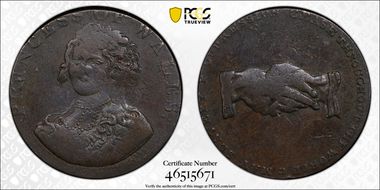
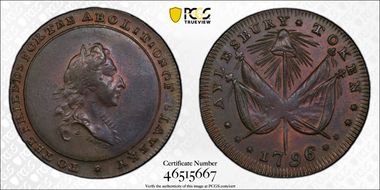

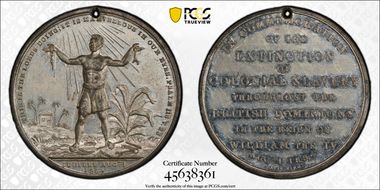
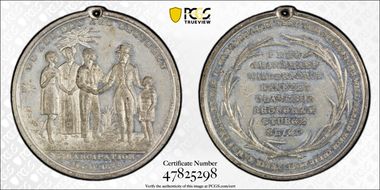
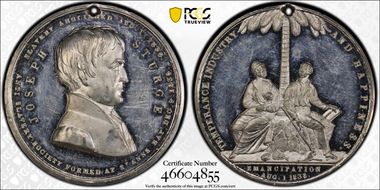


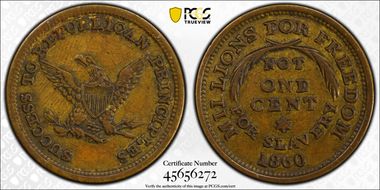

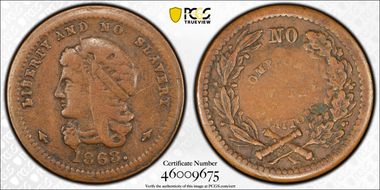
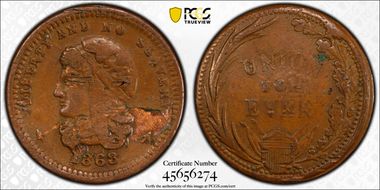
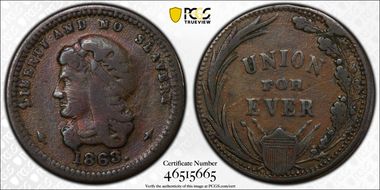
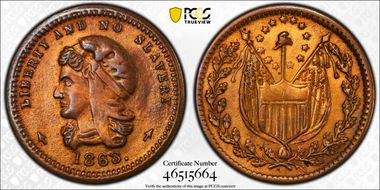
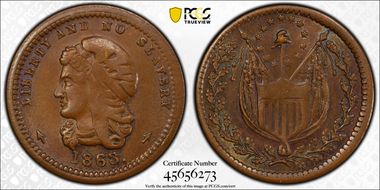
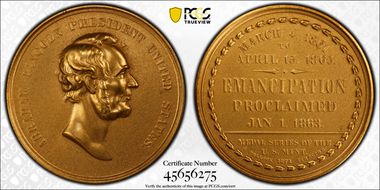
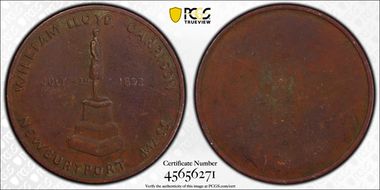
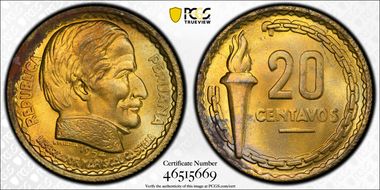
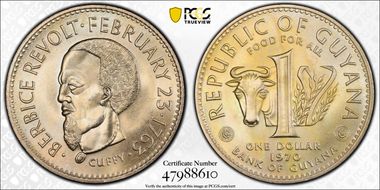

_album.jpg)
_album.jpg)







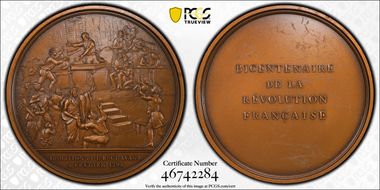
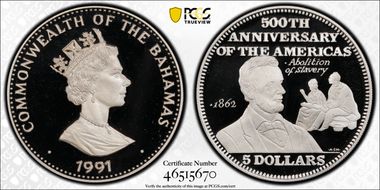



_album.jpg)
_album.jpg)
_album.jpg)
_album.jpg)
_album.jpg)
_album.jpg)
_album.jpg)
_album.jpg)
_album.jpg)
_album.jpg)
_album.jpg)
_album.jpg)
_album.jpg)
_album.jpg)


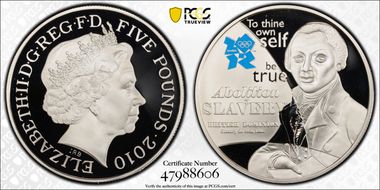
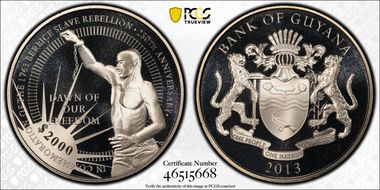
_album.jpg)
_album.jpg)
